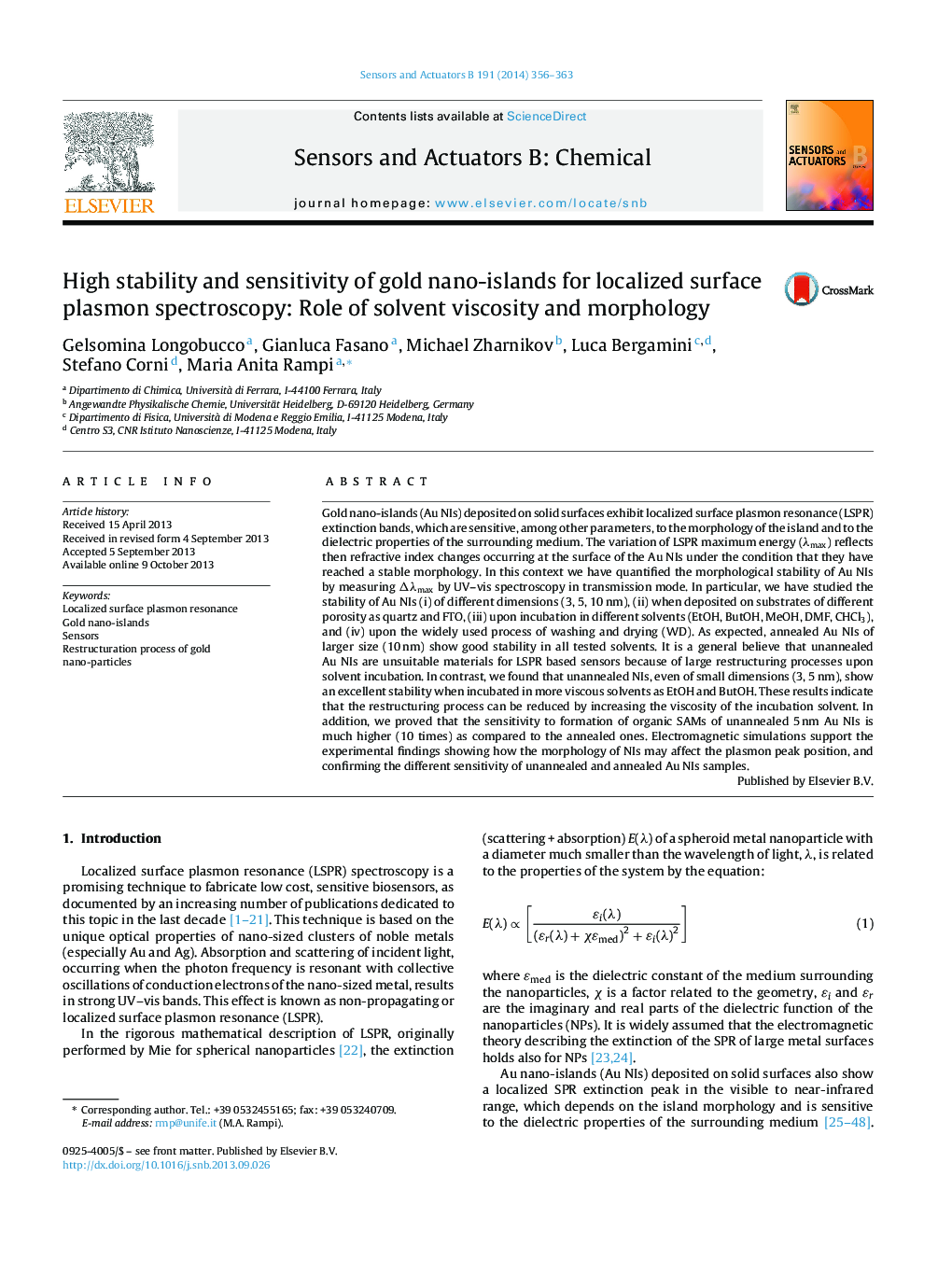| Article ID | Journal | Published Year | Pages | File Type |
|---|---|---|---|---|
| 7147602 | Sensors and Actuators B: Chemical | 2014 | 8 Pages |
Abstract
Gold nano-islands (Au NIs) deposited on solid surfaces exhibit localized surface plasmon resonance (LSPR) extinction bands, which are sensitive, among other parameters, to the morphology of the island and to the dielectric properties of the surrounding medium. The variation of LSPR maximum energy (λmax) reflects then refractive index changes occurring at the surface of the Au NIs under the condition that they have reached a stable morphology. In this context we have quantified the morphological stability of Au NIs by measuring Îλmax by UV-vis spectroscopy in transmission mode. In particular, we have studied the stability of Au NIs (i) of different dimensions (3, 5, 10 nm), (ii) when deposited on substrates of different porosity as quartz and FTO, (iii) upon incubation in different solvents (EtOH, ButOH, MeOH, DMF, CHCl3), and (iv) upon the widely used process of washing and drying (WD). As expected, annealed Au NIs of larger size (10 nm) show good stability in all tested solvents. It is a general believe that unannealed Au NIs are unsuitable materials for LSPR based sensors because of large restructuring processes upon solvent incubation. In contrast, we found that unannealed NIs, even of small dimensions (3, 5 nm), show an excellent stability when incubated in more viscous solvents as EtOH and ButOH. These results indicate that the restructuring process can be reduced by increasing the viscosity of the incubation solvent. In addition, we proved that the sensitivity to formation of organic SAMs of unannealed 5 nm Au NIs is much higher (10 times) as compared to the annealed ones. Electromagnetic simulations support the experimental findings showing how the morphology of NIs may affect the plasmon peak position, and confirming the different sensitivity of unannealed and annealed Au NIs samples.
Related Topics
Physical Sciences and Engineering
Chemistry
Analytical Chemistry
Authors
Gelsomina Longobucco, Gianluca Fasano, Michael Zharnikov, Luca Bergamini, Stefano Corni, Maria Anita Rampi,
